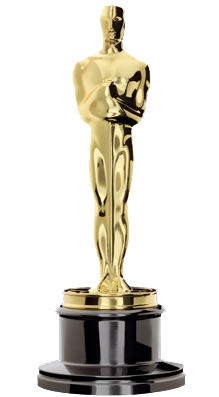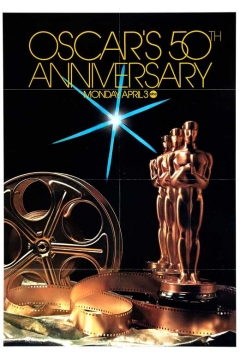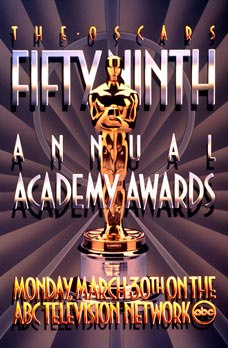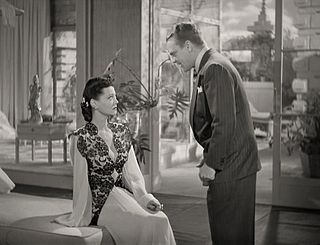Related Research Articles

The Academy Awards of Merit, commonly known as the Oscars or Academy Awards, are awards for artistic and technical merit given for "Excellence within the American and international film industry".
The Academy Award for Best Documentary Feature Film is an award for documentary films. In 1941, the first awards for feature-length documentaries were bestowed as Special Awards to Kukan and Target for Tonight. They have since been bestowed competitively each year, with the exception of 1946. Copies of every winning film are held by the Academy Film Archive.
The Academy Award for Best Sound is an Academy Award that recognizes the finest or most euphonic sound mixing, recording, sound design, and sound editing. The award used to go to the studio sound departments until a rule change in 1969 said it should be awarded to the specific technicians, the first of which were Murray Spivack and Jack Solomon for Hello, Dolly!. It is generally awarded to the production sound mixers, re-recording mixers, and supervising sound editors of the winning film. In the lists below, the winner of the award for each year is shown first, followed by the other nominees. Before the 93rd Academy Awards, Best Sound Mixing and Best Sound Editing were separate categories.

Driving Miss Daisy is a 1989 American comedy-drama film directed by Bruce Beresford and written by Alfred Uhry, based on his 1987 play. The film stars Jessica Tandy, Morgan Freeman, and Dan Aykroyd. Freeman reprised his role from the original Off-Broadway production.

The Dolby Theatre is a live-performance auditorium in the Ovation Hollywood shopping mall and entertainment complex, on Hollywood Boulevard and Highland Avenue, in the Hollywood neighborhood of Los Angeles, California, United States. Since its opening on November 9, 2001, it has been the venue of the annual Academy Awards ceremony. It's adjacent to Grauman's Chinese Theatre and across from the El Capitan Theatre on Hollywood Boulevard.

Lois Maureen Stapleton was an American actress. She received numerous accolades becoming one of the few actors to have achieved the Triple Crown of Acting winning an Academy Award, a Primetime Emmy Award and two Tony Awards. She has also received a British Academy Film Award and a Golden Globe Award, as well as a nomination for a Grammy Award.

The 50th Academy Awards ceremony, presented by the Academy of Motion Picture Arts and Sciences (AMPAS), honored films released in 1977 and took place on April 3, 1978, at the Dorothy Chandler Pavilion in Los Angeles. During the ceremony, AMPAS presented Academy Awards in 22 categories. The ceremony, televised in the United States by ABC, was produced by Howard W. Koch and was directed by Marty Pasetta. Actor and comedian Bob Hope hosted the show for the 19th time. He first presided over the 12th ceremony held in 1940 and had last served as a co-host of the 47th ceremony held in 1975. Five days earlier, in a ceremony held at The Beverly Hilton in Beverly Hills, California, on March 29, the Academy Scientific and Technical Awards were presented by hosts Kirk Douglas and Gregory Peck.

The 62nd Academy Awards ceremony, presented by the Academy of Motion Picture Arts and Sciences (AMPAS), honored the best films of 1989 and took place on March 26, 1990, at the Dorothy Chandler Pavilion in Los Angeles beginning at 6:00 p.m. PST / 9:00 p.m. EST. During the ceremony, AMPAS presented Academy Awards in 23 categories. The ceremony, televised in the United States by ABC, was produced by Gil Cates and directed by Jeff Margolis. Actor Billy Crystal hosted the show for the first time. Three weeks earlier, in a ceremony held at The Beverly Hilton in Beverly Hills, California on March 3, the Academy Awards for Technical Achievement were presented by hosts Richard Dysart and Diane Ladd.

The 59th Academy Awards ceremony, organized by the Academy of Motion Picture Arts and Sciences (AMPAS), took place on March 30, 1987, at the Dorothy Chandler Pavilion in Los Angeles beginning at 6:00 p.m. PST / 9:00 p.m. EST. During the ceremony, AMPAS presented Academy Awards in 23 categories honoring films released in 1986. The ceremony, televised in the United States by ABC, was produced by Samuel Goldwyn Jr. and directed by Marty Pasetta. Actors Chevy Chase, Paul Hogan, and Goldie Hawn co-hosted the show. Hawn hosted the gala for the second time, having previously been a co-host of the 48th ceremony held in 1976. Meanwhile, this was Chase and Hogan's first Oscar-hosting stint. Eight days earlier, in a ceremony held at The Beverly Hilton in Beverly Hills, California, on March 22, the Academy Awards for Technical Achievement were presented by host Catherine Hicks.

The 5th Academy Awards were held by the Academy of Motion Picture Arts and Sciences on November 18, 1932, at the Ambassador Hotel in Los Angeles, California, hosted by Conrad Nagel. Films screened in Los Angeles between August 1, 1931, and July 31, 1932, were eligible to receive awards. Walt Disney created a short animated film for the banquet, Parade of the Award Nominees.
Goodbye, Miss Turlock is a 1948 American short film directed by Edward L. Cahn, released as one of the John Nesbitt's Passing Parade series. It won an Oscar at the 20th Academy Awards in 1948 for Best Short Subject (One-Reel).

James Graham Stewart was an American pioneer in the field of sound recording and re-recording. His career spanned more than five decades (1928–1980), during which he made substantial contributions to the evolution of the art and science of film and television sound.
Hank Aaron: Chasing the Dream is a 1995 American documentary film directed by Michael Tollin. The story follows baseball slugger Hank Aaron's pursuit of Babe Ruth's all-time record for home runs.

Wiard Boppo "Bill" Ihnen was an American art director. He was active from 1919 to 1960 and won Academy Awards for Best Art Direction for Wilson (1944) and Blood on the Sun (1945). He was married to Edith Head.
Gordon E. Sawyer was sound director at Samuel Goldwyn Productions. He won 3 Oscars for Best Sound and was nominated a further 13 times.
Nathan Levinson was an American sound engineer. He won an Oscar in the category Sound Recording for the film Yankee Doodle Dandy and was nominated for 16 more in the same category. He was also nominated seven times in the category Best Special Effects.
Thomas T. Moulton was an American sound engineer. He won five Academy Awards in the category Sound Recording and was nominated for eleven more in the same category. He was also nominated four times in the category Best Visual Effects.
Loren L. Ryder was an American sound engineer. He won five Academy Awards and was nominated for twelve more in the categories Best Sound Recording and Best Effects.
Jerry Bresler was an American film producer. He won an Oscar in 1944 as co-producer for Heavenly Music and in 1945 for Stairway to Light.
Robert Herbert Planck was an American cinematographer. He was nominated for four Academy Awards in the category Best Cinematography for the films Anchors Aweigh, The Three Musketeers, Little Women and Lili.
References
- ↑ "Herbert Moulton". AFI|Catalog. Retrieved May 22, 2024.
- ↑ "The 18th Academy Awards (1946) Nominees and Winners". oscars.org. Archived from the original on July 6, 2011. Retrieved August 16, 2011.
- ↑ "The 21st Academy Awards (1949) Nominees and Winners". oscars.org. Archived from the original on July 6, 2011. Retrieved August 18, 2011.
- ↑ Nugent, Frank S. (June 16, 1939). "THE SCREEN IN REVIEW; Comedy Lifts Its Head Again in 'Clouds Over Europe' at the Music Hall--'Land of Liberty' Opens at the Fair--'Amangeldy' Is Seen at the Cameo". The New York Times. ISSN 0362-4331 . Retrieved May 22, 2024.
- ↑ "The Griffith Project Volume 11: Selected Writings of D.W. Griffith: Indexes and Corrections to Volumes 1–10". The Griffith Project. January 1, 2007. Retrieved May 22, 2024.
- ↑ Moulton, Herbert (December 3, 1924). "I Will Yet Thrive". The Los Angeles Times. Retrieved May 22, 2024.